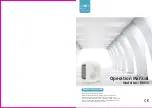
Table 14 — Accessory/FIOP Economizer and
Electric Heaters Static Pressure Drop (in. wg)
COMPO-
NENT
CFM
2200 2500 3000 3500 4000 4500 5000 5500 6000
1 Heater*
Module
.02
.03
.05
.065
.08
.10
.12
.14
.155
2 Heater*
Modules
.03
.05
.07
.09
.12
.14
.16
.19
.21
Durablade
Economizer
.02
.02
.03
.04
.05
.06
.07
.08
.09
Parablade
Economizer
.21
.25
.35
.49
.61
.77
—
—
—
FIOP — Factory-Installed Option
*Refer to unit price pages to determine if 1 or 2 heater modules are
required.
Table 15 — FIOP MoistureMiser Dehumidification
Package Static Pressure Drop (in. wg)
UNIT SIZE
50HJ
UNIT
NOMINAL
TONS
CFM PER TON
300
400
500
008
7
1
⁄
2
.08
.13
.18
009
8
1
⁄
2
.10
.15
.22
012
10
.08
.13
.18
014
12
1
⁄
2
.11
.18
.26
PRE-START-UP
Failure to observe the following warnings could result
in serious personal injury:
1. Follow recognized safety practices and wear protec-
tive goggles when checking or servicing refrigerant
system.
2. Do not operate compressor or provide any electric
power to unit unless compressor terminal cover is in
place and secured.
3. Do not remove compressor terminal cover until all
electrical sources are disconnected.
4. Relieve all pressure from system before touching or
disturbing anything inside terminal box if refrigerant
leak is suspected around compressor terminals. Use
accepted methods to recover refrigerant.
5. Never attempt to repair soldered connection while re-
frigerant system is under pressure.
6. Do not use torch to remove any component. System
contains oil and refrigerant under pressure. To re-
move a component, wear protective goggles and pro-
ceed as follows:
a. Shut off electrical power to unit.
b. Relieve all pressure from system using both high-
and low-pressure ports. Use accepted methods to
recover refrigerant.
c. Cut component connection tubing with tubing cut-
ter and remove component from unit.
d. Carefully unsweat remaining tubing stubs when nec-
essary. Oil can ignite when exposed to torch flame.
Proceed as follows to inspect and prepare the unit for ini-
tial start-up:
1. Remove all access panels.
2. Read and follow instructions on all WARNING, CAU-
TION, and INFORMATION labels attached to or shipped
with unit.
3. Make the following inspections:
a. Inspect for shipping and handling damages such as bro-
ken lines, loose parts, or disconnected wires.
b. Inspect for oil at all refrigerant tubing connections and
on unit base. Detecting oil generally indicates a re-
frigerant leak. Leak-test all refrigerant tubing connec-
tions using electronic leak detector, halide torch, or
liquid-soap solution.
c. Inspect all field- and factory-wiring connections. Be
sure that connections are completed and tight.
d. Inspect coil fins. If damaged during shipping and han-
dling, carefully straighten fins with a fin comb.
4. Verify the following conditions:
a. Make sure that condenser-fan blades are correctly po-
sitioned in fan orifice. Refer to Condenser-Fan Ad-
justment section on page 30 for more details.
b. Make sure that air filters are in place.
c. Make sure that condensate drain trap is filled with wa-
ter to ensure proper drainage.
d. Make sure that all tools and miscellaneous loose parts
have been removed.
e. Make sure that the start-up checklist has been per-
formed and filled out.
START-UP
Unit Preparation —
Make sure that unit has been in-
stalled in accordance with these installation instructions and
applicable codes.
Return-Air Filters —
Make sure correct filters are in-
stalled in unit (see Table 1). Do not operate unit without return-
air filters.
Outdoor-Air Inlet Screens —
Outdoor-air inlet
screens must be in place before operating unit.
Compressor Mounting —
Compressors are inter-
nally spring mounted. Do not loosen or remove compressor
holddown bolts.
Internal Wiring —
Check all electrical connections in
unit control boxes; tighten as required.
Refrigerant Service Ports —
Each refrigerant sys-
tem has 4 Schrader-type service gage ports: one on the
suction line, one on the liquid line, and 2 on the compressor
discharge line. Be sure that caps on the ports are tight.
Compressor Rotation —
On 3-phase units, it is im-
portant to be certain the scroll compressor is rotating in the
proper direction. To determine whether or not compressor is
rotating in the proper direction:
1. Connect service gages to suction and discharge pressure
fittings.
2. Energize the compressor.
3. The suction pressure should drop and the discharge pres-
sure should rise, as is normal on any start-up.
If the suction pressure does not drop and the discharge
pressure does not rise to normal levels:
1. Note that the evaporator fan is probably also rotating in
the wrong direction.
2. Turn off power to the unit.
3. Reverse any two of the unit power leads.
4. Turn on power to the compressor.
The suction and discharge pressure levels should now move
to their normal start-up levels.
NOTE: When the compressor is rotating in the wrong di-
rection, the unit makes an elevated level of noise and does
not provide heating or cooling.
26
Summary of Contents for 50HJ008-014
Page 29: ...Fig 33 MoistureMiser Option Operation 29...
Page 39: ......















































